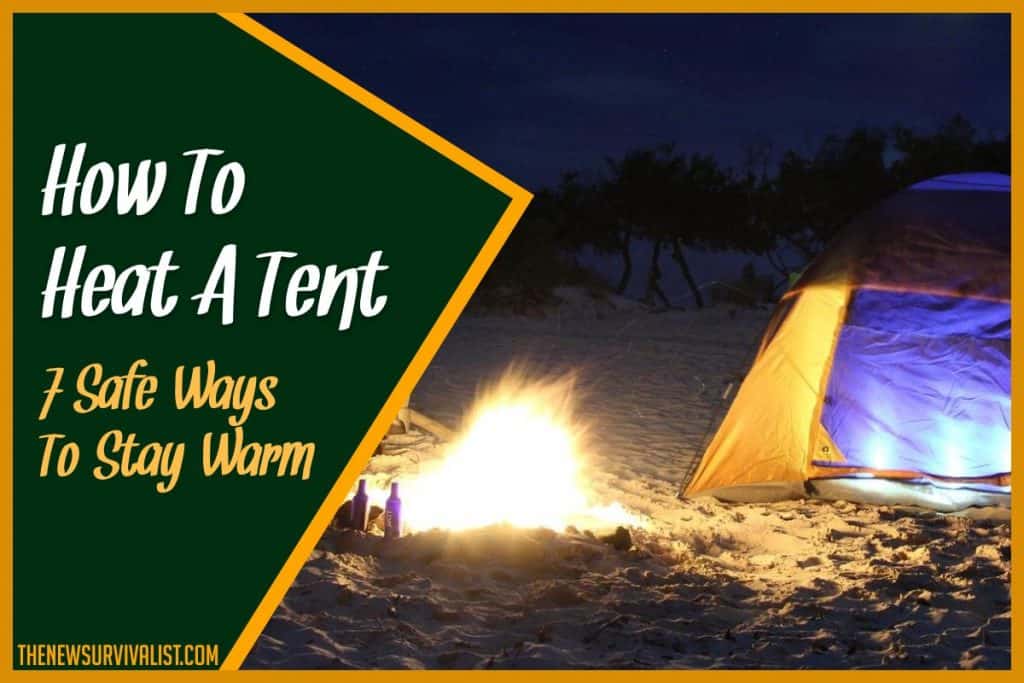Heat is essential to maintain our normal body functions. The normal body temperature is around 98.6 oF (37 oC). People tend to lose body heat faster when exposed to moisture, and cold weather. If too much heat is lost, and the body temperature falls below 95 oF (35 oC), a medical emergency called hypothermia occurs which can lead to death.
Hypothermia can easily set in when camping in a cold environment. Knowing how to warm a tent, and retain this heat is essential for survival. There is no single optimal method for heating a tent. However, here’s a list of safe ways to stay warm inside a tent:
- Body heat and high caloric diet
- Catalytic heater
- Electric heaters
- Disposable hand and foot warmer
- Hot water bottles/pack
- Hot rocks
- Hot air tent heater
How is Heat Transferred, Retained, and Lost
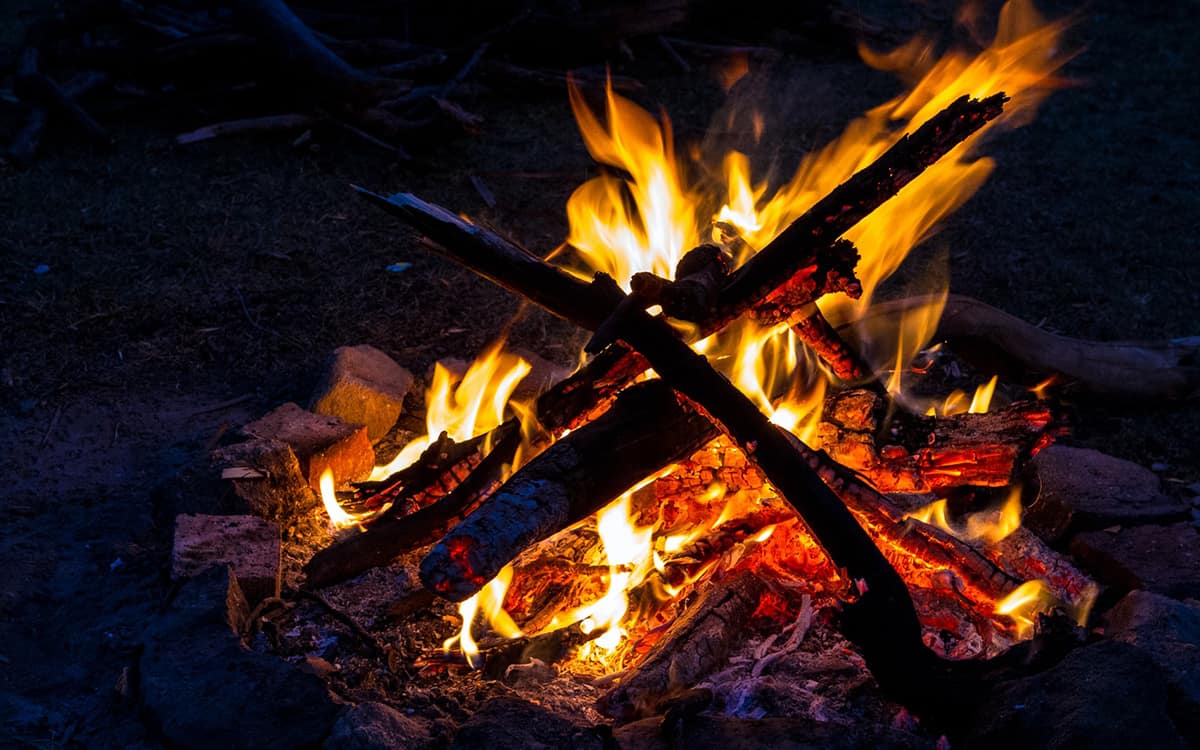
Heat is a form of energy that is transferred from one body to another based on the temperature difference. The effect is usually a transfer of heat from a hotter body to a colder body. This results in the reduction of temperature of the hot body and the increase in temperature of the cold body until an equilibrium is met.
The fundamental mechanisms behind heat transfer are conduction, convection, and radiation.
Conduction
Conduction is the transfer of heat through a solid material. For heat transfer to occur, two objects must be touching each other. A chocolate bar that melts when held is a good example of this mechanism. Another example is warming your cold hands by holding a cup of hot coffee.
Convection
Convection is the transfer of heat through a liquid or gas. When a liquid or gas is heated, it becomes less dense and rises, similar to how a hot air balloon flies. The opposite happens to the cold air, which is why it sinks, and why the coldest part of a freezer is at the bottom. In a tent, any opening or hole at the roof will easily let warm air out.
Radiation
Radiation or thermal radiation, is the transfer of heat (energy) through electromagnetic waves, directly to a heat absorbing body. There are different spectrums of electromagnetic waves; all of which can transfer heat. As a rule, anything that has a temperature emits energy (heat), albeit in varying degrees. In general, thermal heat is transferred mostly through infrared waves.
The sun heating the earth is a great example of how thermal radiation works. There is no solid contact between the sun and the earth, and there is no liquid or gas between them. The heat from the burning sun is transferred through different electromagnetic waves, but most of it is transferred by infrared waves.
Losing and Retaining Heat
As previously mentioned, heat moves from a warmer body to a colder body through the different heat transfer methods. In camping, a warm tent loses its heat through the combination of the three.
The tent loses its heat through conduction when it is set-up over a cold surface. It loses heat through convection when the surrounding cold air hits the walls or when there’s an opening for warm air to escape. Finally, since all objects that have a temperature emits radiation, it also loses some heat this way.
By knowing the mechanisms responsible for heat transfer, preppers and survivalists can address each one to better retain heat. Conduction of heat can be slowed down by using non-conductive materials as a barrier. Heat loss through convection can be minimized by setting up the tent under the cover of trees and patching up any large tent openings. Finally, heat loss through thermal radiation can be slowed down or even prevented by using reflective materials.
All of the above information is essential especially for preppers when SHTF and there’s no other choice but to camp outside.
Precautions When Heating a Tent
A. Carbon Monoxide Poisoning
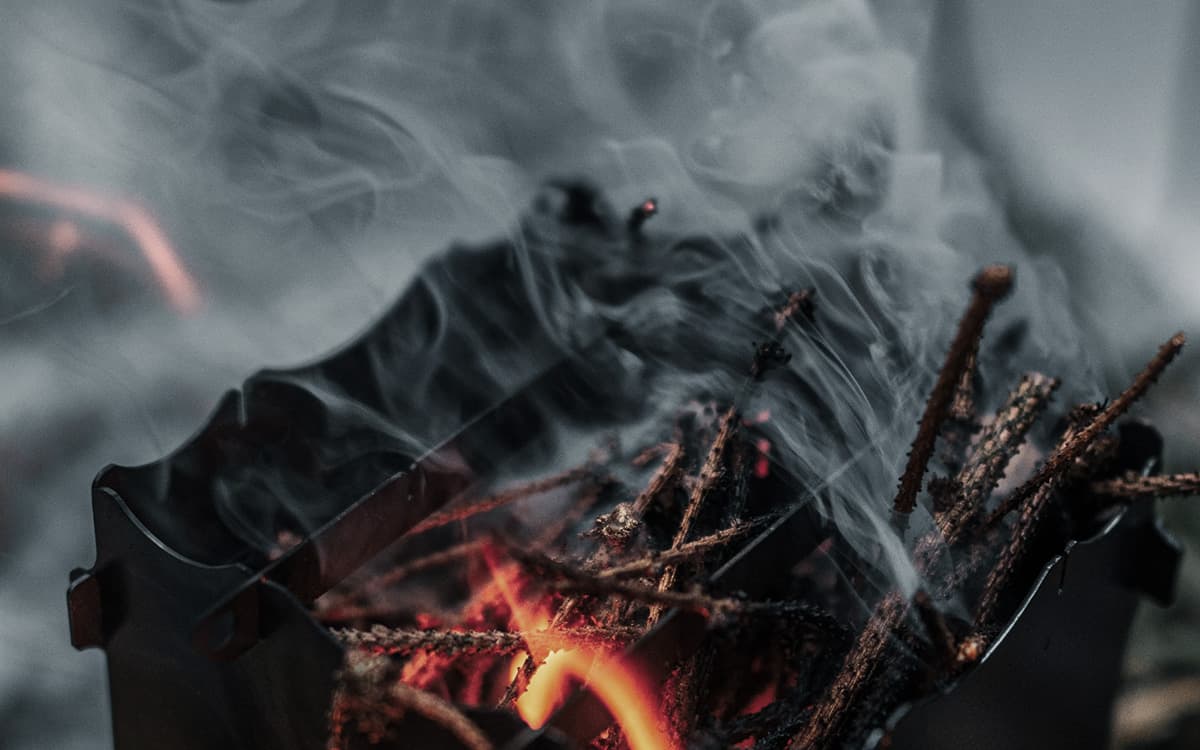
Lighting a fire inside a tent is potentially fatal and should never be attempted. Carbon monoxide is a gas that is formed by the incomplete combustion of a fuel source when there is inadequate oxygen to burn. Due to a tent’s poor ventilation and small space, the oxygen is rapidly consumed when a fire is lit inside. As such, carbon monoxide can easily build up and cause harm.
Carbon monoxide is odorless and colorless; characteristics that make it extremely easy to be exposed to without noticing any effect. At high enough levels (1,200 ppm), it readily displaces the oxygen in the blood and rapidly causes toxicity and suffocation at the cellular level, eventually resulting in death.
Signs of Carbon Monoxide Poisoning
- Impaired mental status similar to intoxication
- Dizziness
- Loss of physical coordination
- Breathlessness
- Tachycardia (heart rate >100 beats per minute)
- Chest pain
- Seizures
- Loss of consciousness
If these symptoms are present, and there’s a high suspicion of carbon monoxide accumulation, everyone should seek an open area immediately. In case this happens in a tent, leave the tent and keep it open to dissipate the carbon monoxide.
Anything that burns should never be used inside a tent. A lot of people have the misconception that candles don’t give off a sufficient amount of carbon monoxide; this is completely false. Candles can still deplete the oxygen in the air, especially when used in large quantities in an attempt to heat a tent.
Carbon Monoxide Detector
Even when using a heat source that is regarded as safe and does not produce carbon monoxide, preppers should still bring a carbon monoxide detector. These devices are small, compact, and lightweight. It adds an extra layer of security in case a heat source malfunctions.
B. Fire

Some methods of heating a tent can accidentally set fire to its surroundings. As a general precaution, anything that can cause a fire should not be left unattended inside a tent. When using an electric heater that uses heating coils, make sure that it is completely secured, and won’t topple over. The heating element can still start a fire, especially since most of the contents in a tent are flammable.
Safe Ways to Stay Warm
-
Body Heat and High Caloric Diet
Our body is capable of continuously producing heat as long as there are calories to burn. Eating a high-calorie diet before sleeping, coupled with methods that help retain heat is oftentimes sufficient enough to keep a tent warm. In a winter environment, the body’s caloric requirement increases to 3600 up to 6000 calories per day depending on the level of activity.
Calories are obtained from three macromolecules: carbohydrates, fats, and proteins.
- Carbohydrates – consist of 50-60% of the total caloric intake. Simple carbohydrates like sugary food and starches are easily metabolized and give a burst of energy (heat). Complex carbohydrates like pasta and whole grains are slower to metabolize and releases energy slowly.
- Fats – usually consist of 25-30% of the caloric intake. These take longer to metabolize and provide long term energy. It gives off twice the calorie per pound compared to carbohydrates. Preppers should always have some fatty food as part of their ration when sleeping outdoors.
- Protein – 20% of the total caloric intake. These are also complex molecules that are metabolized slowly. It is an essential part of any diet as it aids in the repair of the body.
This is the best and safest way to stay warm when combined with heat retention methods. There are no drawbacks to this, as long as there’s an adequate food supply.
However, even if our body is like a combustion engine, if it gets too cold too fast, the chemical processes that facilitate metabolism slows down. This is why it is still important to apply ways to retain heat and protect oneself from the cold.
-
Catalytic Heater
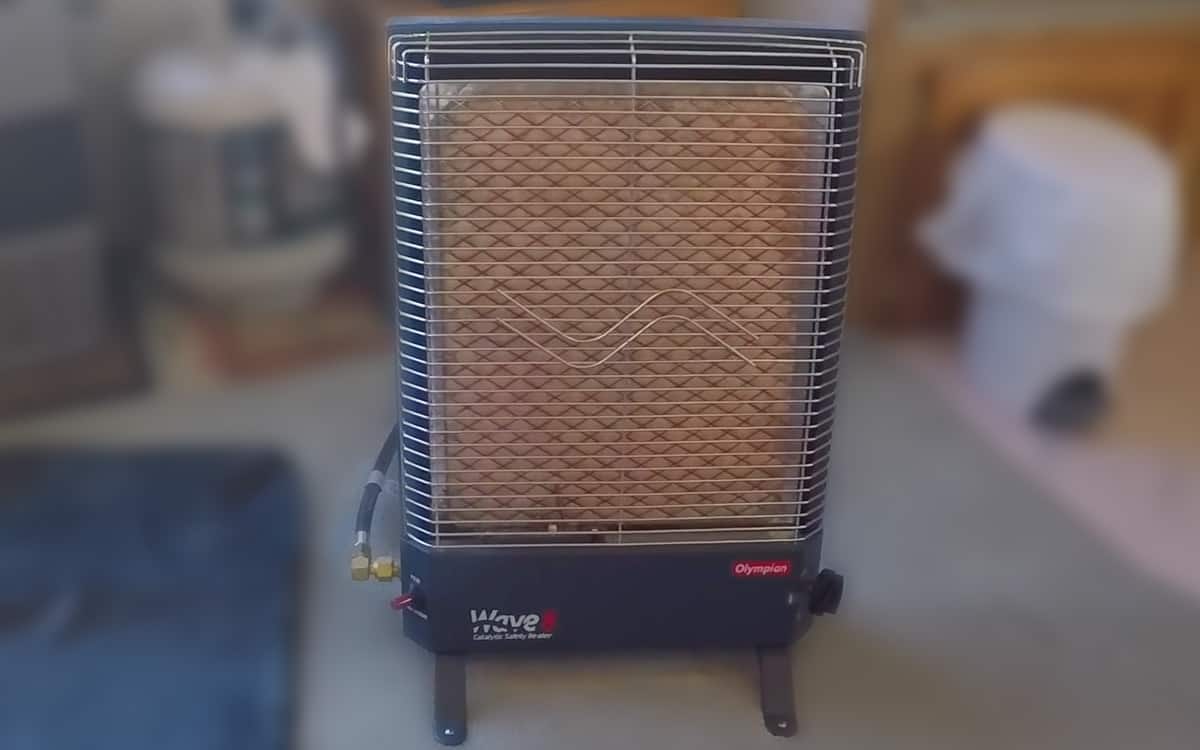
Catalytic heaters use fuel, a catalyst, and oxygen to produce heat. This heater uses either propane or butane as its fuel source. A catalyst is typically made of platinum or platinum-coated metals, and platinum-like metals such as rhodium and palladium.
Fuel and oxygen normally react with each other to produce a small amount of heat. Introducing a catalyst into the equation speeds up the reaction and produces a large amount of heat as a byproduct. The catalyst is not consumed in the process, and the reaction will only stop if there are no more fuel or oxygen.
The reaction produces no flame, so there’s no risk of carbon monoxide accumulation. However, it still consumes oxygen and can deplete the oxygen supply inside a tent. In addition to this, a small amount of carbon dioxide and water is produced as a byproduct of the chemical reaction.
Despite this, the modern camping catalytic heaters are made with multiple fail-safe systems. Most models come with an oxygen depletion sensor (ODS) which automatically shuts off the heater when the oxygen level drops to dangerous levels. Some also have a built-in pressure sensor that prevents gas leakage, and a tip-over safety feature that also shuts off the heater when tipped over.
These added features make this type of heater safer for heating a tent. There is still a small risk of a malfunction happening, which is why this device should never be left unattended.
-
Electric Heaters
Electric heaters are another attractive option to heat a tent. It works by passing an electric current through heating elements which are electrical resistors. These resistors convert the electric current into heat. Therefore, there is no combustion happening, and no carbon monoxide is being produced.
There is still some risk when using electric heaters. First, it can get hot enough that it melts objects around it, and second, there’s the risk of tipping over and starting a fire. It is best to choose an electric heater that has a tip-over safety feature. For added safety, it should be placed properly on a stable surface, keeping it away from objects that can melt or easily burn.
Its greatest drawback is the need for electricity to run it. A generator is needed to be able to use this type of heater outdoors. In addition to this, it consumes a great amount of electricity. There are battery-powered electric heaters in the market, however, these kinds do not produce enough heat and run out of power rapidly.
-
Disposable Hand and Foot Warmer
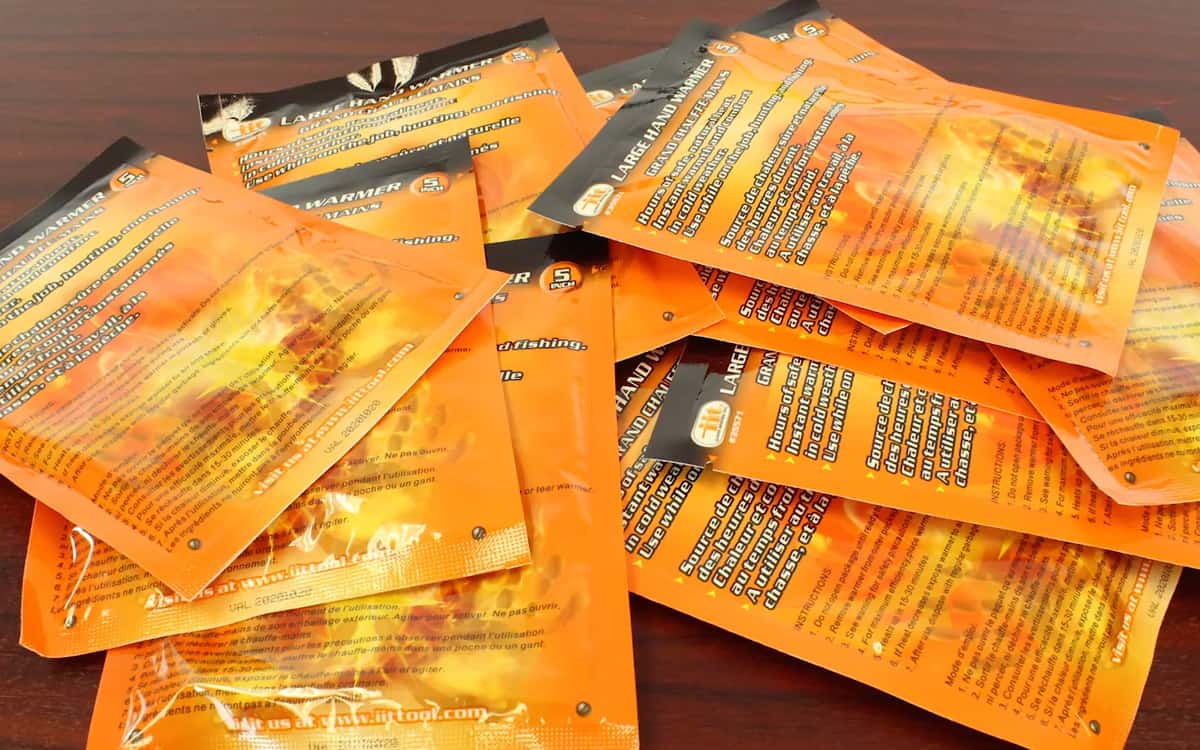
Hand and foot warmers function similarly to a catalytic heater. Both use chemical reactions and catalysts to produce heat. A pouch of hand warmer contains iron powder, activated charcoal, vermiculite, and table salt. It produces heat through the formation of rust when the packet is exposed to air and moisture.
This chemical reaction is aided by the activated charcoal and vermiculite which holds moisture needed for the reaction. The catalyst in this mixture is table salt, which speeds up the reaction and making it possible to produce enough heat. In addition to holding moisture, the vermiculite and activated charcoal diffuse the iron powder so it won’t produce heat too quickly and accidentally burn the skin.
These usually last for 7 hours to more than 24 hours depending on the brand. By itself, it won’t be able to heat a whole tent. However, when combined with good mittens, socks, or a great sleeping bag, it is a safe and easy way to stay warm.
-
Hot Water Bottles
Thermal mass is the ability of any material to absorb and retain heat. Water has three-times the thermal mass of concrete, which makes it an effective and safe way to heat a tent. Its ability to retain heat is proportional to its volume. The larger the volume of heated water, the longer it can stay hot.
The water needs to be heated near boiling, or up to boiling which means regular water bottles are not recommended. Rubber water bottles or thermoplastic water bottles should be used instead. To use these, fill them with hot water and place them around the tent, or inside the sleeping bag.
When using hot water bottles, their lid should always be closed tightly to prevent accidental spillage. The bottles are hot enough to cause injury. Wrapping the bottles in cloth before sleeping eliminates the risk of burning through prolonged contact.
-
Hot Rocks
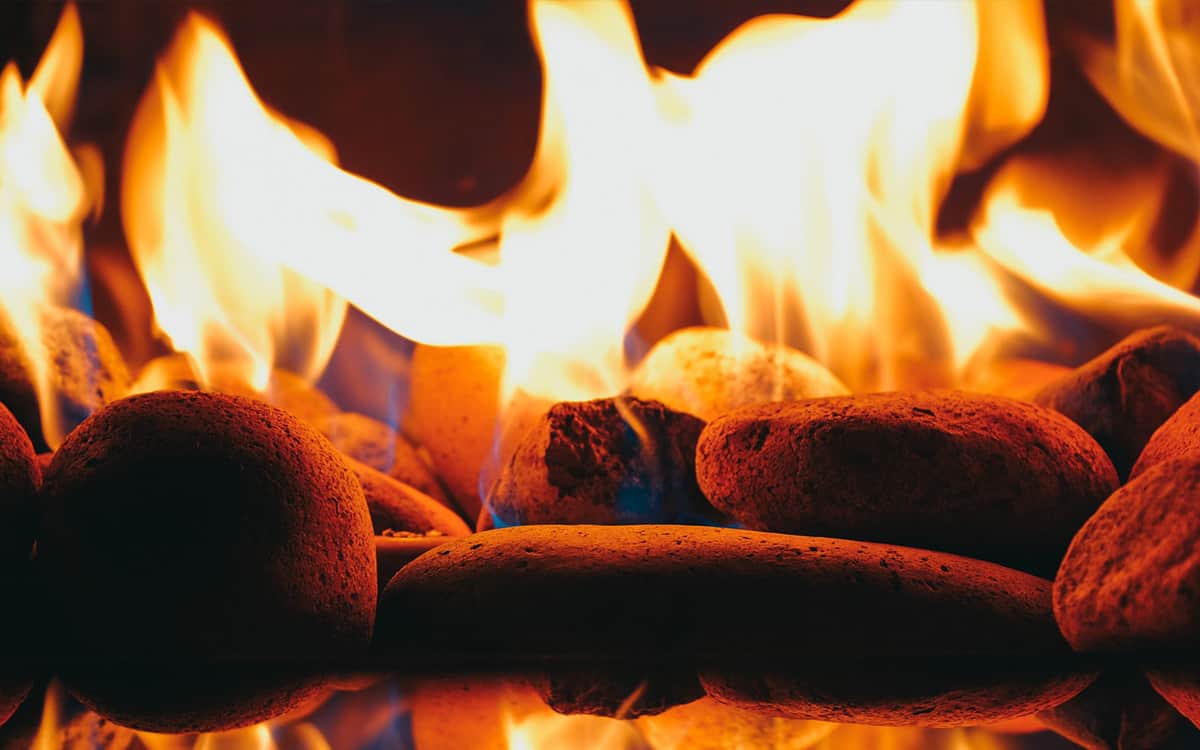
Similar to water, rocks are capable of absorbing and storing heat. Rocks are also available everywhere so there is no problem in finding one.
To heat rocks, place them 5 to 10 inches away from a heat source or a campfire. These should be turned around regularly to make sure it is being heated from all sides. Doing this ensures that the core is also being heated.
When the rocks are too hot to touch with the bare hands, they are ready to be used to warm the tent. Heating rocks this way usually takes around 1 to 2 hours depending on the magnitude of the fire source. To use them, wrap them up in a cloth and place them around the tent or in the sleeping bag to warm it up.
It is not advised to heat rocks directly on top of a fire. It can heat the rock too much which can cause serious injuries when used. It will also charr the rocks which can stain clothes and other materials. Similar to the hot water bottles, there is a risk of burning through skin contact if used improperly.
-
Hot Air Tent Heater
Burning a fire outside, and using it to provide heating inside the tent is relatively safe. A hot air tent heater utilizes a propane-powered burner to heat pipes or a non-galvanized steel box. At the opposite ends of these pipes or box, are two air ducts. One is used to actively suck in the air using a fan, while the other end vents out hot air into the tent.
It works by heating the air that was sucked into the pipes/box and then forcing it into the tent. There’s no risk of carbon monoxide accumulation since the air vented comes from outside. On top of this, since the fire source is also outside, in a location abundant with oxygen there is no chance that carbon monoxide will be formed.
However, this setup is extremely bulky and requires a car battery to operate the fan. One would need to bring canisters of butane or a tank of propane to use this method. Despite these reasons, it is still one of the best ways to safely heat a tent.
DIY Hot Tent Heater
In theory, a DIY hot tent heater can be made using wood as the fire source. This requires a slight modification in the design of the hot air tent heater’s steel box. A smaller steel box can be used, and air ducts connected to the steel box need to be positioned differently. The intake duct should be connected at the lower edge on the side of the steel box, while the output duct is connected at the top side of the box.
This will ensure that the hot air will always vent out through the output duct due to the property of air to rise when heated. As the hot air is vented into the tent, cold air gets sucked in through the other duct and enters the steel box. The air will get heated and will exit again through the output duct, repeating the cycle.
Heating the steel box can be achieved by placing it on top of a campfire. For safety, a longer insulated air duct can be used to position the campfire farther from the tent. Since the fire is burning outside there’s virtually no risk of carbon monoxide build-up.
There are other ways to achieve this setup and one of them is using a bent metal pipe and a raised Swedish log torch. The metal pipe is bent at a 90 degrees angle and is inserted inside the log torch, while the other end is pointed into the tent. The part of the pipe that goes into the log torch needs to insert further down until its end is exposed to open space. This ensures that the air getting sucked is fresh and smoke-free.
However, there is a risk of sucking in soot that falls from the torch. Attaching a shorter pipe that angles horizontally and extends further from the center of the log torch is a possible solution.
Heat Retention
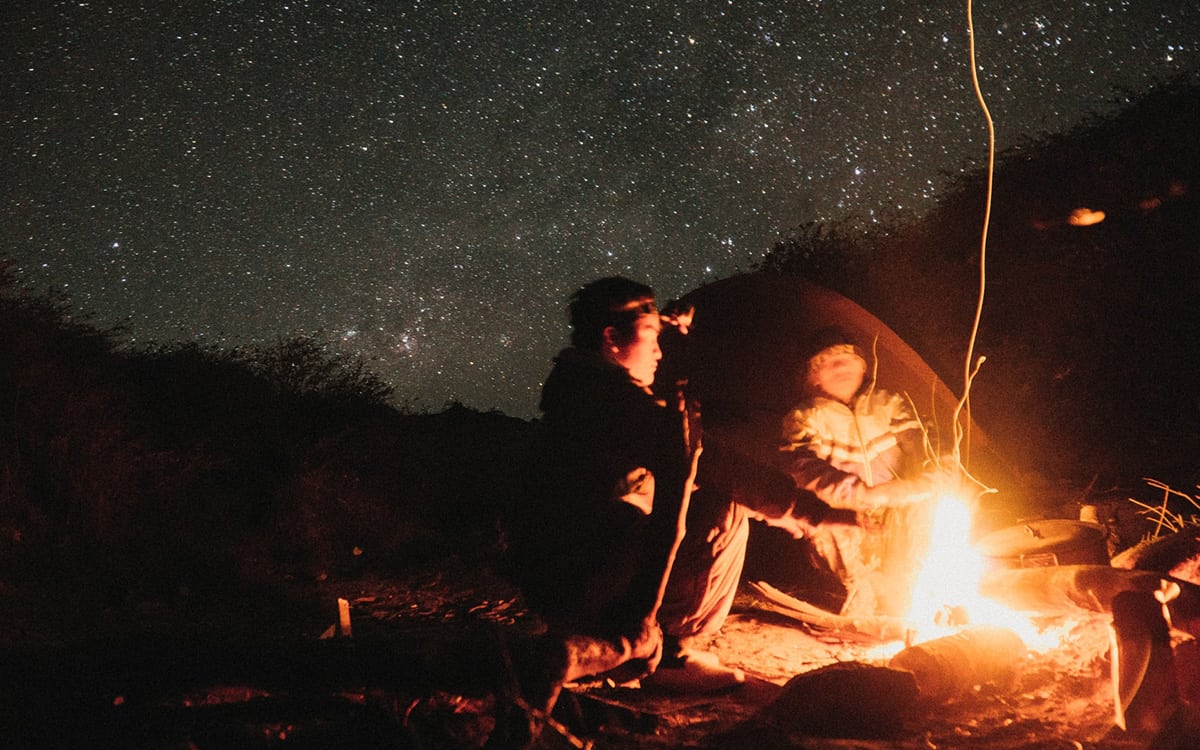
Aside from heating the tent, it is also important to make sure the heat does not easily dissipate. Heat loss and retention are affected by the following:
- Tent: size and quality
- Tent location
- Tent flooring insulation
- Tent insulation
- Proper clothing
- Sleeping bag
- Mylar blanket
a. Tent: Size and Quality
Larger spaces are harder to heat and keep warm. This is why the right sized tent should be used based on how many people are going to sleep in it. Aside from this, the quality of the tent is also important. The best tent to use is a 4-season tent or a winter tent specifically designed to retain heat and resist high winds.
b. Tent Location
The location where a tent is set up is equally important. Ridges and open areas tend to experience more wind. This can cause a faster cooling of the tent through convection. As such, whenever applicable, it is better to set-up camp under trees or other structures that may provide cover.
Before setting a tent under trees, always look up and check for possible hazards that can fall. This includes a broken, rotten branch, beehives, or wasps’ nest.
c. Tent Flooring Insulation
The surface where a tent is set up should be insulated. The bare ground is often cold and the transfer of heat through conduction will make it harder to retain heat. Dry leaves and pine needles can be collected and spread out to form makeshift insulation. Sleeping pads can also be used inside the tent as an additional ground insulator.
d. Tent Insulation
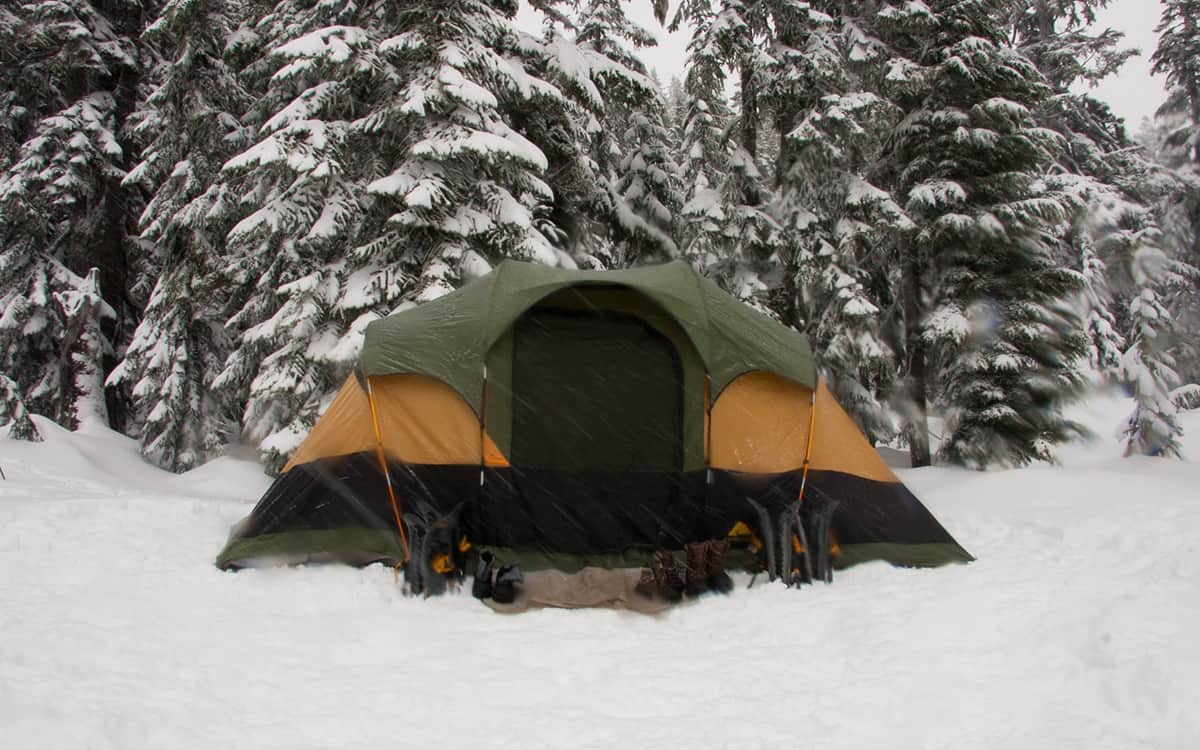
In instances where the only tent available is not rated for a cold environment, the tent itself can also be insulated. The principle behind this is to create a barrier between the tent wall and the inside air, or the tent wall, and the outside air.
To insulate inside, a soft, flexible insulator like a thermal fabric or reflective air bubble insulation can be stuck on the tent walls and the roof using adhesives. However, this can be time-consuming when always on the move.
The outside can be insulated by covering parts of the tent with waterproof thermal fabric, or a tarp. Take care not to cover the whole tent, as these two materials are not breathable, and can cause oxygen deprivation.
e. Proper Clothing
These are the most important way to retain heat and keep warm. To stay warm, it is important to have insulation between the body and the cold environment.
Layers
Wearing layers of cloth is a good way to protect the body from the environment. In general, you want 4 layers of clothing:
- Long underwear aka long johns – should be made of non-absorbent material to keep the skin dry. It should also fit snuggly against the skin.
- Mid-layers – this layer will serve to wick away the sweat from the skin and the long john, and evaporate it to the environment.
- Insulation layer – it is best to use thick clothing for this layer for better insulation against the environment.
- Outer layer – perhaps the most important among the layers. This will directly protect someone from the cold wind and the cold environment.
On top of the layers, a winter hat, mittens, winter socks, boots, and scarf are also necessary to keep warm. By adding or removing a layer, sweating can also be avoided.
Avoid Sweating
Sweating dampens clothes with moisture, and it loses its insulation value. The small amount of moisture also facilitates the loss of heat through evaporation and convection. That is also why it is important to choose the proper set of socks and mittens.
Avoid Cotton
Cotton clothing is not advised to be used in extreme cold. The cotton absorbs and holds on to moisture which causes it to quickly lose its insulation value. Using socks and mittens made of wool, fleece, or similar synthetic materials is preferred.
Wool, Fleece, and Other Synthetic Materials
These materials do not lose their insulating properties even when they get wet. Most socks and mittens made from these materials are also thicker, which allows them to absorb more moisture, and wicks it away from the skin. Long johns, winter hats, earmuffs, and scarves should also be made from these materials.
f. Sleeping Bag
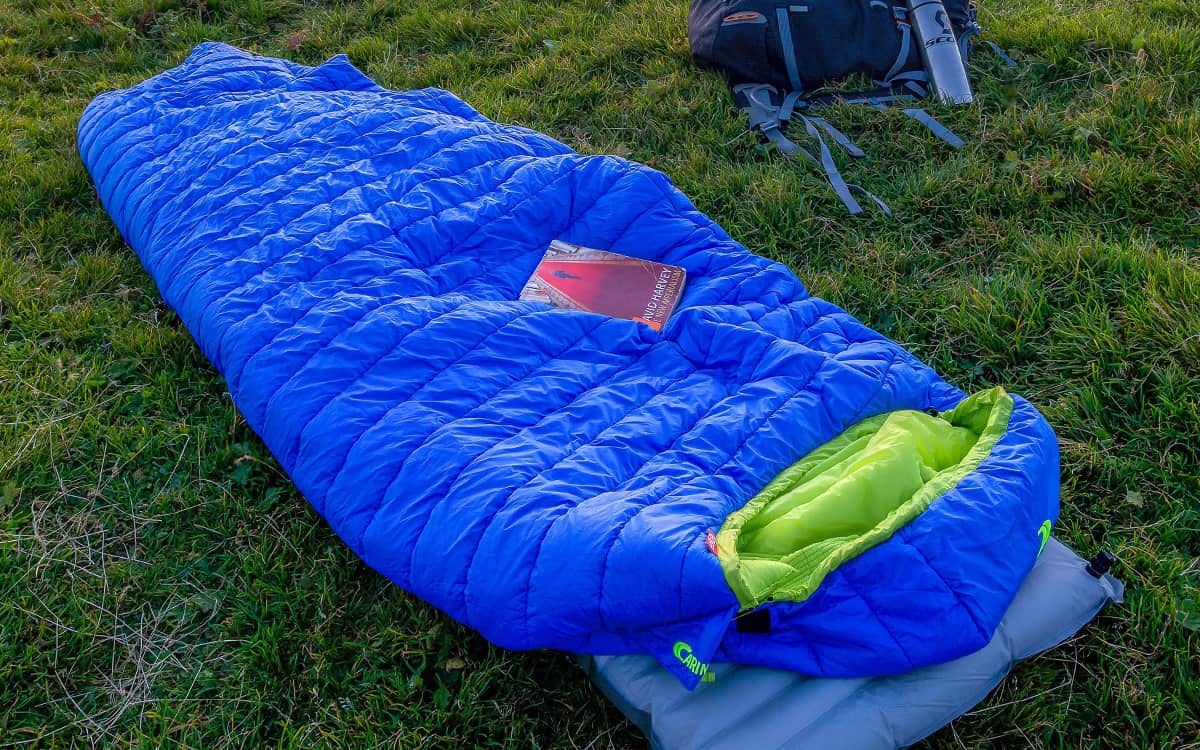
Choosing the right type of sleeping bag can increase heat retention. Several factors that should be considered are temperature rating, design, and insulation type.
Temperature Rating
Sleeping bags have a temperature rating for Summer (+30 oF or higher), 3-season (15-30 oF), and winter (+15 oF and lower). These ratings are based on the average person, so one must factor in their weight and metabolic rate when choosing a sleeping bag based on this rating.
Design
Sleeping bags comes in 4 designs:
- Rectangular – loose and roomy. Not the best for insulation against the cold.
- Semi-rectangular – moderately better at retaining heat while still offering some room.
- Mummy – fits snugly and is the best design for heat retention.
- Double Bag – this bag is made to be used by two people who plan to sleep together in one sleeping bag. It allows people to share their body heat, resulting in better heat retention.
These also come with additional features like hoods and shells that would increase insulation. Some models even have additional zippers for better temperature control, to prevent sweating.
Insulation Type
There two types of materials used for insulation, synthetic and down.
- Synthetic – cheaper, continues to insulate even when damp, hypoallergenic, and dries fast.
- Down – performs well in cold, dry weather, easily compresses, and durable.
g. Mylar Blanket
Space blanket aka mylar blanket is a thin, low-weight, low-bulk blanket made of heat-reflective plastic. This blanket reduces a person’s heat loss that would have otherwise occurred through thermal radiation, convection, and evaporation.
The blanket can be used inside the tent, or as additional insulation on top of a sleeping bag. When using it to stay warm in the tent, it is important to leave some space between the body and the blanket. Using it too close to the body allows for conductive heat loss to occur.
In the end, staying warm can be achieved through different combinations of methods. A heat source is important to initially raise the temperature, but insulators are equally important to retain and maintain warmth.

